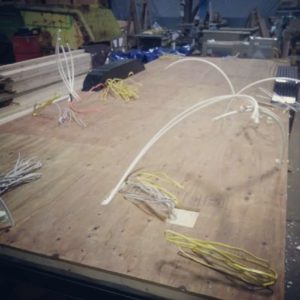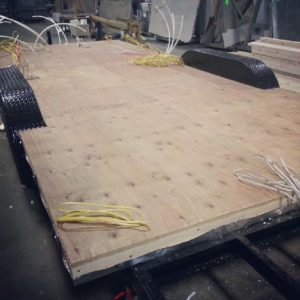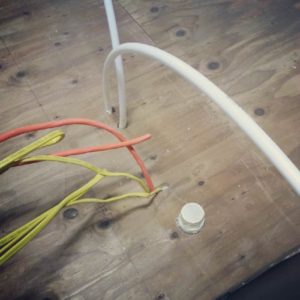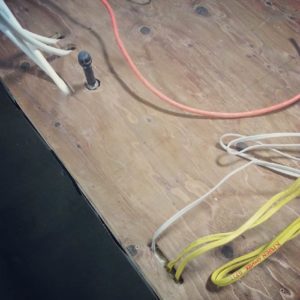back to blog
Done with subfoor sheathing. Commence wall framing!
I'm finished covering the subfloor with 3/4" plywood. With all the pipes and wires coming up from underneath, there was a lot of careful measuring, whole drilling, jig-saw cutting, etc. necessary, and everything needed to be fed through these wholes before the sheathing could be glued and screwed down. See images of some of these details below.







Hi! Quick question-- Do you have plywood under your joists as well, or just the aluminum flashing? If it's just the flashing, I'm wondering if having things more sealed in would give you better insulating properties. How has this worked out for you?
No plywood, just the aluminum. I think you are right that an extra layer of plywood might help to seal up a little tighter, but the spray foam I used really fills in any little gaps and cracks, so it might not make a difference. We had some cold weather making our way out to California and the house performed very well. But if you were planning to live in a very cold climate you could certainly add a few things to beef up the floor insulation even more.
Hi Alek, I just came across your reply now. Thanks!
Since you have your utilities in the floor, I suppose just having the flashing would give you easier access to them from below if you ever needed to get access. Was that the idea?
I'm considering the spray foam as well. A builder I consulted with told me it would also add strength to the walls and keep things in place while moving. My only concern is that it might make it more difficult to get at utilities in the walls since it encases everything. Having gone through the process and living with it now, would you choose spray foam insulation again?
Yes, I would absolutely use it again! You are right that the closed-cell foam adds a lot of structural rigidity to the walls AND it also acts as a vapor barrier, so no additional vapor barrier needs to be added.
It does encase all the plumbing and wiring in the wall -- and the closed-cell foam is very hard and would not be fun to rip out for a repair. So just make sure you do a good job with your plumbing and pressure test the water lines before you foam them in.
I used open-cell foam in the floor so if I need to get in there it won't be quite so hard to cut out to access the plumbing.
Good to know. Thanks!